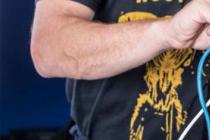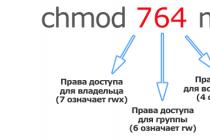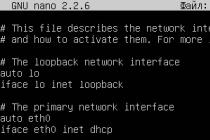Raven75 01-02-2016 12:03
moved from Survival
It's not even about survival. In the usual comfort Or rather, in the absence thereof. But, who knows, suddenly having a phone will become a matter of survival in a critical situation. A fire there, a flood, an ambulance needs to be called, but you never know ...
Stag-beetle 01-02-2016 12:55
Nokia, they say, have better reception. Moreover, the less heaped up, the better the reception. This is from the words of other users - he himself did not ask such a problem, did not conduct tests.
Dmitry & Santa 01-02-2016 13:01
I arrived at the dacha, replaced the SIM card - there is a reception, left - I inserted the SIM card into the smartphone. Or take a second SIM card and call forwarding, so as not to suffer ...
Sadovnik 01-02-2016 15:04
On the pipes a little higher have already been written.
Raven75 01-02-2016 15:59
quote: Originally written by Sadovnik:
Raven75 You did not specify the region where it takes badly, look at the Tele2 operator, in the regions it sometimes works much better.
Moscow region, Naro-Fominsk district.
I have not heard that someone has Tele2 in the dacha village. If this network was good there, then it would be used.
goga312 01-02-2016 16:33
It's not even about survival. In the usual comfort Or rather, in the absence thereof. But, who knows, suddenly having a phone will become a matter of survival in a critical situation. A fire there, a flood, an ambulance needs to be called, but you never know ...The fact is that at the dacha we have a very bad connection. And hell knows why. But it is so. Residents of the dacha village have long been tormented and swearing. "Megafon" does not take at all. "Beeline" takes very badly. Somehow he catches "MTS". But it's also hard, on some days the signal disappears and you have to leave the house to catch it. Well, in the receiver often croaks or echoes are such that you can't make out anything.
However, I noticed the following thing. All phones are taken there in different ways. When I have 1 antenna strip on my smartphone, my wife has 2 on her phone. And when I have no signal at all, she has 1. And they call her more often. And she sends SMS without problems, but they often "hang" with me. In a word, the point is also in the phone itself, in the reception power.
Previously, this did not bother me, because at the dacha I want to rest, and not be distracted by trifles; whoever needs it - they will call you back if they do not get through right away. But from this spring, the phone will become vital for work; you will need to constantly be in touch. And so I am looking for a suitable pipe.
Firm, design, screen size, "prestige" - none of this matters. Yes, let it be something ancient; The cheaper the better. For me, the main thing is that the phone picks up the signal well and allows you to speak normally. In this regard, the question is - what do you recommend? Which pipe is better to take? What if someone had similar problems?
If you need communication exactly at the dacha, buy a signal amplifier cellular communication, costs about the same as a mobile phone, and will provide excellent communication within a radius of 50-100 meters from the installation site. Install an external antenna, connect an amplifier, and even the weakest signal will be received at a normal level. It is, of course, more expensive to get than to buy a pipe once, but for years, and all households will have a connection, and not only on 1 pipe with an unpredictable result.
Raven75 01-02-2016 16:45
quote: Originally written by Stag-beetle:
Nokia, they say, have better reception. Moreover, the less heaped up, the better the reception
Buy a spare "Korean" handset of some kind with an external antenna: samsung, LG, Pantech. Siemens with an antenna also had good reception ... then the networks were not so penetrating everything and everyone, so they made the power more and the sensitivity higher.
Yes, this is understandable, but that's why I asked about a specific model. We had an old Nokia at our dacha, still black and white, with a flashlight (I don't remember the model), we used it at one time as a country phone. She covered herself last year.
But I would not say that she caught much better than my smart.
That is, not all old Nokia is equally useful
Nick brake 01-02-2016 17:18
quote: All phones are taken there in different ways. When I have 1 antenna strip on my smartphone, my wife has 2 on her phone, and when I have no signal at all, she has 1.
Is the operator the same?
Raven75 01-02-2016 18:18
quote: Originally written by Nick Brake:
Is the operator the same?
Yes, Beeline. In this case. The tubes are different.
May 01-02-2016 18:26
I still keep Alcatel 302 and Siemens.
Stayn 01-02-2016 18:39
quote: Originally written by Raven75:From personal experience:
Firm, design, screen size, "prestige" - none of this matters. Yes, let it be something ancient; The cheaper the better. For me, the main thing is that the phone picks up the signal well and allows you to speak normally. In this regard, the question is - what do you recommend? Which pipe is better to take? What if someone had similar problems?
1. Motorola StarTAC - with extended antenna received better than any other of the same time.
2. Motorola V60 - also very good at catching where most others at the same time lost the signal.
Of the more modern ones, I don’t know. Now there were naphtha repeaters at every corner, so it somehow became irrelevant to look at this parameter ..
May 01-02-2016 18:47
You can add Ericsson T39, Nokia 6210 to the list.
fur dictator 01-02-2016 18:56
no, people can't live without a telephone! even in the country! what the fuck, an ambulance, the girls are calling for it!
The fact is that at the dacha we have a very bad connection. And hell knows why. But it is so. Residents of the dacha village have long been tormented and swearing. "Megafon" does not take at all. "Beeline" takes very badly. Somehow he catches "MTS". But it's also hard, on some days the signal disappears and you have to leave the house to catch it
Raven75 02-02-2016 01:09
quote: Originally written by goga312:
If you need communication in the country, buy a cellular signal amplifier, it costs about the same as a mobile phone, and will provide excellent communication within a radius of 50-100 meters from the installation site ...
Well, yes, but ... I don’t sit at my summer cottage all the time, I move around the village too. Moreover, we have 2 sites there, and they are located farther from each other than 100 meters.
But if I don’t find a normal pipe, then I’ll get something like that. Where to go?
May 02-02-2016 13:46
In order not to bathe with battery, which is problematic to get on old mobile phones, the best option "Motorola M3888", you immediately kill two birds with one stone, good sensitivity plus works on 4 AAA batteries.
mjk50 02-02-2016 14:44
To the above I will add the good old Nokia 3310 ...
Destryktiv 02-02-2016 15:44
I tried for an experiment and nokia3310, and erikson t28 and motorola, the reception is very mediocre, the sound quality and audibility by the subscriber is even worse. Old bearded bike about super reception of old phones.
It is necessary to install the amplifier, otherwise you will suffer without communication, and with any telephone. Even with the oldest and most protruding antenna.
Alexandr_VV 02-02-2016 16:56
By the way, try to look at the situation in a different plane. Why does it suck to take cell phones? Because GSM is a "digital" communication standard. It works very well in the zone of confident reception, and almost immediately disappears in the zone of uncertain reception. In those areas where cellular antennas are not stuck on every pole, it is wiser to turn to analog forms of communication - radio. Now on Ali you can buy a very good walkie-talkie, such as "Baofeng", which costs a little more than the cheapest phone, within two or three rubles, plus all sorts of things powerful antennas, tanget, batteries, and other bullshit. The beauty is that, in addition to the standard frequencies of the civilian range, it overlaps the service frequencies of the VHF range, that is, the channels of the traffic police, firefighters, the Ministry of Emergency Situations, railway workers and airports. Usually it is forbidden to use them, but in critical cases you can go out to us and ask for help.
Heccrbq 02-02-2016 17:24
Gentlemen, the question is very relevant, suggest current models. Black and white Nokia is not on sale now. What is on sale up to 3-4 tr. frank one-time Chinese "g", with all that it implies. After a long search, a couple of days ago I bought a Fly FF241 for 2050 rubles, of the minuses - the case immediately burst in 2 places when the battery was inserted, but not critical, there are no reminders in the calendar, a stupid notebook with short names and one number per contact , of the pluses - a battery for 2700, 2 SIM cards, a radio without headphones, a photo and video camera with a flash / flashlight, a dictaphone, but most importantly, I liked the quality of the connection - you can hear well as you, and you can hear the interlocutor well.
Another model Philips Xenium X1560 - a weak case, a powerful battery, cost about 2000 rubles 2 years ago.
A few days ago I washed in the washing machine for 1.5 hours with powder.
Sokh 3 days, disassembled to the board, dried with a hairdryer, and on a battery. Miraculously came to life (and not immediately) came to life only on the third day. You can hear the caller very well.
But the disadvantages are the weak body, the lack of a flashlight.
Heccrbq 02-02-2016 17:27
quote: Originally posted by May:
Any old mobile phone, for example these:
Alcatel 302, Siemens S25, Motorola SD930, Motorola TimePort L7089 / P7389, Philps.
The second option is a car GSM antenna on the roof of the house plus a mobile phone with a socket for an external antenna.
I still keep Alcatel 302 and Siemens.
They have a problem with batteries, the original ones are dead, there are either no new high-quality ones on sale, or they are of very poor quality. And as a rule, problems begin with the keyboard - the boards are not iron, the years make themselves felt. Find where the saved new (unused) phone old model, but they are either sold at a high price or not on sale.
goga312 02-02-2016 18:45
By the way, try to look at the situation in a different plane. Why does it suck to take cell phones? Because GSM is a "digital" communication standard. It works very well in the zone of confident reception, and almost immediately disappears in the zone of uncertain reception. In those areas where cellular antennas are not stuck on every pole, it is wiser to turn to analog forms of communication - radio. Now on Ali you can buy a very good walkie-talkie, such as "Baofeng", which costs a little more than the cheapest phone, within two or three rubles, plus all sorts of powerful antennas, tangets, batteries, and other garbage. The beauty is that, in addition to the standard frequencies of the civilian range, it overlaps the service frequencies of the VHF range, that is, the channels of the traffic police, firefighters, the Ministry of Emergency Situations, railway workers and airports. Usually it is forbidden to use them, but in critical cases you can go out to us and ask for help.
Now, in the vast majority of cases, emergency services also work inside cellular network... For example, in our city, the ambulance in cars does not have walkie-talkies, only cell phones. The radios have poor reception in the city, they are more expensive to maintain, they require additional personnel, as a result, they have already been abandoned for 10 years in favor corporate rates cellular communication.
Alexandr_VV 02-02-2016 19:28
http://mvd-kanal.livejournal.com/573.html
http://live.radioscanner.net/
Werewolf_Zarin 03-02-2016 01:28
quote: Originally written by Alexandr_VV:
City services are possible, but emergency services will never leave radio communications precisely because of its autonomy and independence.
Here is a small example, the information is not secret, the frequencies of the departments of the Ministry of Internal Affairs of Moscow: http://mvd-kanal.livejournal.com/573.htmlAnd here you can listen to the broadcasts of some radio channels directly to the Internet, a very popular resource in narrow circles: http://live.radioscanner.net/
The information is outdated, take a scanner, very few cops work with an open channel.
Alexandr_VV 03-02-2016 05:35
quote: Originally written by Werewolf_Zarin:
The information is outdated, take a scanner, very few cops work with an open channel.
God bless them, with the cops. HARDWARE in the forest, or a distant village, they are not needed. But it makes sense to scan the air, or find out what other services are working in the radis of availability.
NicK71 04-02-2016 18:55
In our room, a mobile phone could not be found, but the Internet was needed. From a copper wire, I bent a "figure eight" with a side of a square of 8 cm, placed it horizontally and found a place under the ceiling where the signal was maximum. The Internet has appeared.
Sirak's avatar
Default
You can also take a sheet of culinary foil, make a "bag" out of it (the bigger it is, the better) and put your mobile phone in it - the signal will significantly increase.
Old 11/21/2008 02:07 AM # 4
sirak
Guru
Sirak's avatar
Default
you can take a bowl of a suitable size and use it as a porobolic antenna in focus by installing a mobile phone
__________________
It's ingenious that it's simple
Default
Thanks for the advice, but in those conditions a zigzag one is more acceptable :-). Only I altered it a little - not one "eight" now, but consists of two. And as a reflector I used the frame of a fluorescent lamp - it became a little better. As for the directional ones, I will definitely look, thanks for the link, but the zigzag one is the easiest to make.
---
The question is, how to power the antenna if there is no antenna jack on the phone? Previously, when telephones were with antennas in the form of a pin, they got out of the situation very simply, a cap made of a copper tube was put on the antenna, to which the central core of the coaxial cable was connected, the braid of the cable was soldered to a brass plate, and pressed against the body of the phone. Now, when the antennas are inside the mobile body, there is probably only one way left, two plates, one of which is pressed against the back of the phone, the other against the top. Maybe there is a possibility of communication with the antenna through a communication loop connected to antenna cable, and put on the phone, I could try, only I don't have a suitable antenna at the moment.
moved from Survival
AJ22 04-02-2016 22:07
the same confusion with the reception and I have tried a lot of pipes I take very confident blackberry 9900
PROTECTOR 05-02-2016 12:27
I'm thinking about a stationary, but they don't seem to be giving out wai wai.
Claude 05-02-2016 12:29
From the old models I will pay attention to Erickson 1018, Only the telephone - nothing superfluous. External antenna on connector. There are no problems with batteries - in the plastic case of the battery there are standard AAA, and AA batteries (if the battery is reinforced). It takes very decently. Separate buttons - easy to dial. It is found on sale - due to a dead battery, the price is affordable. Not everyone knows what is inside the battery.
Panzergrenadeur 05-02-2016 01:00
quote: Originally posted by Raven75:
Yes, let it be something ancient; The cheaper the better. For me, the main thing is that the phone picks up the signal well and allows you to speak normally. In this regard, the question is - what do you recommend?
Motorola M3788 or Ericsson of the same years ...
CMS-UA 05-02-2016 04:54
Steelyard 01-03-2016 18:58
quote: Originally written by Destryktiv:
Interestingly, the advisers of ancient telephones themselves tried to use them in our time? Or all these tips based on the memories of bygone days?
tried
phillips 180
don't worry, it catches
and the sound is normal
quote: tried
On the occasion of the degradation of the next battery in smart in 2009 HTC diamond2 (gsm 850/900/1800/1900, wcdma 900/2100), I decided to try the ancient smart Nokia e50 (gsm 850/900/1800/1900) of 2008 --- original Nokia batteries are still on sale. Downgrade result.
1. Good acc. HTC needed to be charged in 2-3 days, the old smart Nokia will probably last longer.
2. In a city apartment, htc is often unavailable for reception; to receive sms, you need to move to the window. There is no such problem with Nokia.
3. The main purpose of the smart is the Internet. In rural conditions on the street from the htc, you can stretch> 1Mbps from the tower 6 km. Indoors, wcdma often shuts up, gprs does not really help, you need to turn off and turn on the device and re-register on the network. Nokia plows slowly under the same conditions (10-100kbps).
4. If we compare the navigation of gprs htc and a discreet navigator, then the speed of searching for satellites is again not on the side of the universal htc.
Thinking, maybe they will return to the old Nokia? Mail client, navigation, camera were rarely used. Modem functions are in demand, and the stable connection of the old Nokia is not superfluous.
Claude 05-03-2016 17:56
From time to time I use old Phillips models (Xenium series). There are no complaints. As the phone works perfectly, plus, no one to shave and if something (in extreme) is not so a pity.
NicK71 07-03-2016 11:47
quote: Originally written by AlreXZX:
Well, and the fact that 900 MHz is "longer" versus 1800 (in theory 34 km and 17 km, respectively) should not be forgotten.
Do not forget very much.
All have "analog" thinking, not "digital"
even beyond 34 km, the base station continues to hear our pipe,
AlreXZX 18-03-2016 18:55
quote: Originally written by NicK71:
but via the GSM protocol, communication will be denied, because the response time has been exceeded.
I read that only by the operator specially (emergency mode) tuned towers work for 68 km.
Hmm .. 34km / 300000km / s = 0.000113s
Is it possible that the accuracy of the "identification / authentication" error of one ten-thousandth of a second for civilians is observed.
Give me a link to the RTFM GSM protocol in a convenient way
ps wanted to say that "long-range" is not in terms of footage, but in attenuation against the background of obstacles
Bonk 19-03-2016 12:42
quote: Originally written by Dmitry & Santa:
Buy a spare tube "Korean" of some kind, with an external antenna: samsung, LG, Pantech of some sort. The Siemens with antenna also had good reception ...
Have you noticed?
You are advised to devices with a larger antenna.
I noticed such an effect - the Internet worked on the tablet as if nothing had happened, while on the phone everything was zero. The operator is the same, at the same time, in the same place, the devices are only different. The tablet has a larger antenna than the phone.
quote: The tablet has a larger antenna than the phone.
The remark is correct. I spent a very long time with wireless router 2.4Hz and 5Hz with built-in antennas when I pushed it into the corridor. Through 2 walls, 2.4GHz connection is bad, no 5GHz. I pulled up the signal strength by changing the country to America --- outside the house from all sides you can connect, but in the apartment desired speed remained so-so.
The router changed with external antennas, promising signal amplification in the direction of the receiver. At least 1/4 of the wavelength for outdoor antennas is present, at least the radiation pattern along the horizon is known if the antennas are vertical. In reality, both ranges worked without any remarks, without any increase in power. Even more interesting, the power from the new router is less than the old one. The new router is not visible either on the street or on the floors. From which it is possible to draw a logical conclusion about the ability for the base station to hear the subscriber well. Those. if the base station with the help of power reaches the subscriber far, then the subscriber with the limited power of his transmitter must continuously report himself.
A 0.25-0.5 antenna wavelength for a suitable 900MHz in a village is 8-16cm. And who in a modern apparatus would do this? These manufacturers will add 3G and wifi capabilities at a cost to 900MHz gsm.
quote: even beyond 34 km, the base station continues to hear our pipe,
So make your handset look like a BS (antenna and power) and talk far away. If you are not limited by the length, you can use a set of collinear vertical antennas to bring the radiation pattern closer to the plane --- so for wifi routers external antennas do.
NicK71 09-04-2016 20:01
I'm not a real welder) like everyone else I google)
I think that the GSM cellular communication protocol suggests that you should have another cellular base closer than this one 30 km away,
which is true for the city, but not for the countryside.
One division of the indicator only informs
that the base saw you
on distance correct work communication packet timings,
but the real fact of digital voice communication is not a fact,
send SMS or go to the signal source.
Well, don't forget
that the base does not work for one subscriber, but for all, even if they are not.
azlk77 11-04-2016 11:05
At my dacha in the Yaroslavl region, the situation is as follows:
Samsung Galaxy s3 takes only if you climb on a pole, tree or roof.
Sony Erickson z800 normally catches on the street.
Motorola S115 and S118 are taken confidently in the house.
Transmitting large amounts of information, viewing or processing video on the Internet and being mobile will allow the next generation of 4G communications. She will provide high speed internet and will allow you not to depend on Wi-Fi networks... And to be able to use this connection, you need a smartphone with 4G support.
In this review, we have selected the top 10 gadgets that are the most popular in 2016. This rating includes best models, which, according to buyers, are at a high level in terms of price-quality ratio.
10 LG X style K200DS
The smartphone looks slim and sleek. LG X style K200DS is made of scratch resistant plastic. Weight and dimensions are perfectly balanced, and a slight curvature at the front and back allows the gadget to lie comfortably in your hands. The oleophobic coating of the screen will eliminate the appearance of prints.
Excellent performance is provided by a 4-core processor. It copes with simple games without problems, and more powerful ones run on medium graphics settings. It is possible to reorganize the control buttons. A sufficiently loud speaker provides quality sound. Despite the average performance of the cameras (8 and 5 megapixels), the images are obtained in excellent quality, with a wide dynamic range and good color rendering.
Pros:
- Slim and lightweight design.
- Large and bright HD display.
- Nice camera.
- Special mode for reading.
- Great sounding.
Minuses:
- Heats up a little during games.
- No headphones included.
9 Lenovo Vibe K5
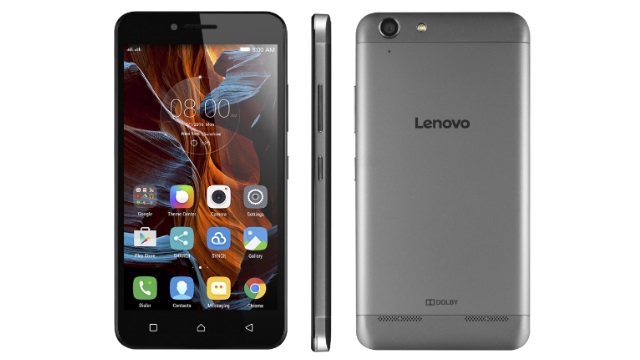
A budget model, the design of Lenovo Vibe K5 is an aluminum case with plastic inserts at the top and bottom. The display with wide viewing angles offers pleasing colors and high-quality video playback.
The 8-core processor handles 3D games with ease. Pressing is read at an average speed. The removable battery (2750 mAh) maintains a decent runtime. Thanks to 3G and 4G support, fast internet access is guaranteed. The 13-megapixel autofocus camera with LED flash provides decent detail and allows you to take high-quality photos. The kit includes a plastic case and a protective film.
Pros:
- Decent sound.
- Bright and clear picture.
- Fast response.
- Separate slots for SIM cards and memory cards.
Minuses:
- Button illumination is not provided.
- Not quite modified software.
8 Huawei P8 Lite

The plastic case with a brushed metal texture gives the smartphone an interesting and stylish look. Huawei P8 Lite performance on good level, it is possible to play some modern games. In everyday work, smooth and fast response, thanks to the large amount of RAM (2 GB). Able to work almost all day long, even with active use.
The speaker sounds clear and loud. The screen provides smooth color reproduction with adjustable brightness and contrast. The front camera allows you to take selfies with the application of a filter that removes skin imperfections. The main camera takes good photos with maximum detail.
Pros:
- Decent performance.
- Nice camera.
- Long-lasting charge.
- Slim and stylish design.
- Sound quality.
Minuses:
- The back cover is prone to scratches.
- It is difficult to buy accessories.
7 LG X Power K220DS
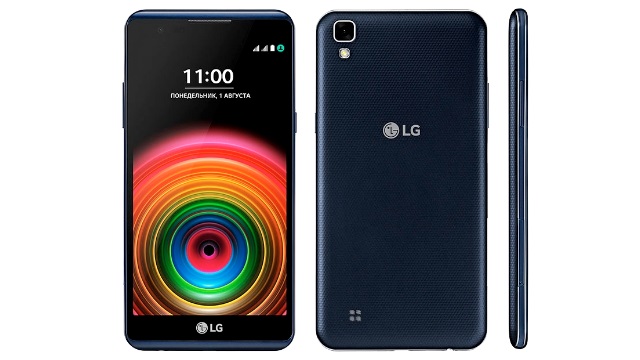
Stylish design, slim body and light weight are all characteristics of the LG X Power K220DS smartphone. Non-separable plastic case eliminates squeaks and the appearance of extraneous sounds. Textured back panel eliminates scratches.
The matrix provides good color rendering. Oleophobic coating eliminates the appearance of prints on the screen. A capacious battery (4100 mAh) makes it easy to work for up to two days. Provided function fast charging... The interface speed is at a standard level, without delays and freezes. Games start, but you shouldn't count on displaying any special effects. Cameras provide clear photos with excellent color reproduction when good lighting.
Pros:
- Long battery life.
- Good build quality.
- Convenient interface.
- Fast charging.
Minuses:
- Non-removable battery.
- Combined SIM card slot.
6 Samsung Galaxy J5 (2016) SM-J510F / DS
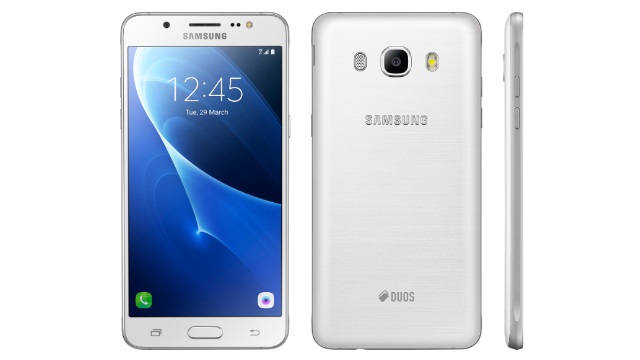
Pleasant appearance, autonomy and balance attract the attention of consumers to smartphone Samsung Galaxy J5 (2016) SM-J510F / DS. The plastic case is paired with a metal frame that protrudes slightly above the screen to protect the glass from damage. Matte coating back cover excludes slipping.
There is virtually no distortion when viewed from the side, thanks to the wide viewing angles. The good brightness of the screen ensures excellent visibility even in the sun. The 4-core processor quickly launches programs and games (some do not give maximum performance and may freeze). The large battery capacity will allow you to keep a charge up to 2 days.
Pros:
- Fast at work.
- Separate memory card slot.
- Nice camera.
- Backlight for front camera.
Minuses:
- No notification indicator.
- No button illumination.
5 Xiaomi Redmi Note 3 Pro 32Gb
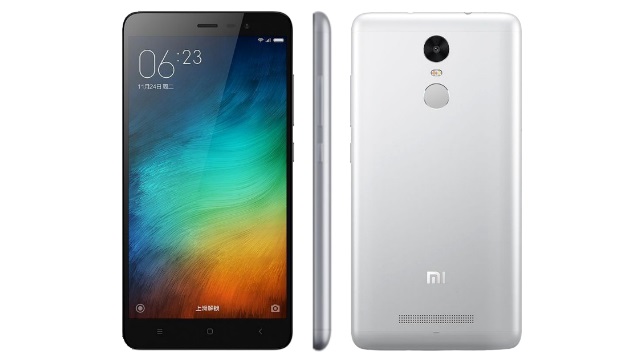
The smartphone is wrapped in an aluminum case, which houses an excellent display (5.5 inches). The viewing angles are maximum, and the brightness margin is excellent. With a state-of-the-art 6-core processor and the latest graphics accelerator, performance is at a very high level. Xiaomi Redmi Note 3 Pro 32Gb supports any games and applications without any problems.
There is a combined slot for SIM cards and memory cards, so you have to make a choice. But the built-in memory of 32 GB allows you not to use a memory card. The cameras shoot relatively well and produce decent quality photos in good lighting conditions. The battery capacity (4050 mAh) allows you to work on it for up to 2 days.
Pros:
- Very high performance.
- Powerful battery.
- Keeps the connection well.
- Bright and high quality screen.
Minuses:
- Average picture quality in the dark.
- Slightly slippery body.
4 Huawei ShotX
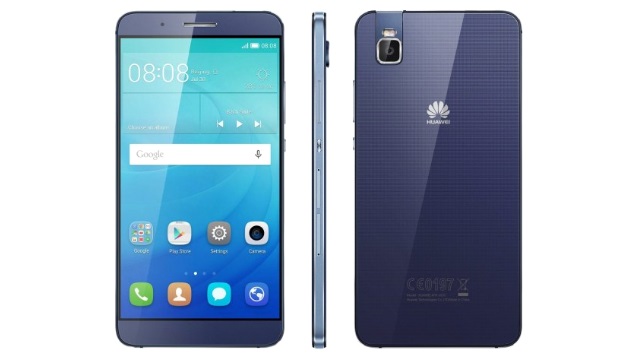
The body is made of plastic and has a monolithic construction. The exception is 2 metal inserts that run along all the ends of the smartphone. The brightness margin of the screen is decent. The color rendering for the IPS-matrix is at a high level. Viewing angles are almost 180 degrees. On the right side Huawei smartphone ShotX has 2 trays. One of them is for the main nano SIM card. The second is also for a SIM card or memory card (up to 128 GB). The fingerprint scanner is located on the left side.
The camera is equipped with an autofocus function, a dual LED flash and a special notch, for which it can be rotated 180 degrees. This movement activates the camera app, which allows you to capture high-quality selfies. And many built-in functions will diversify your photo and make your shooting more interesting.
Pros:
- Flip up camera.
- Good network signal reception.
- Great display.
- Smooth interface work.
- Good build quality.
Minuses:
- Few accessories available.
- Not very loud speaker.
3 Xiaomi Mi5 64GB
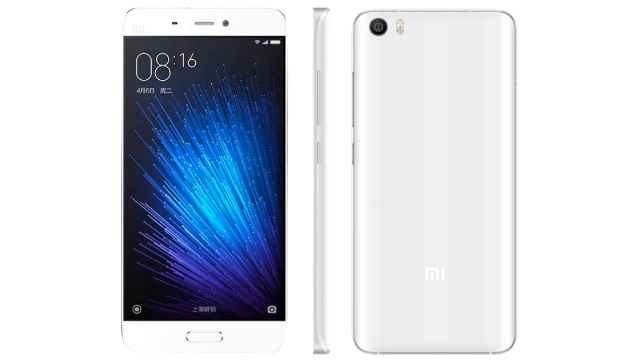
Xiaomi smartphone Mi5 64GB is the most anticipated flagship of the year. Body materials are made of premium glass and metal. The slightly rounded back panel allows the smartphone to fit perfectly in the hand. The metal frame protects the gadget from damage if dropped. There is a mechanical key under the screen with a built-in fingerprint scanner.
The smartphone has 16 LEDs, thanks to which the brightness has increased by 30%, without changing the colors of the images. Supports wireless charging... For protection, the camera lens is covered with a sapphire crystal. Both cameras take excellent quality pictures.
Pros:
- Very fast response.
- Lots of built-in memory.
- Full HD screen.
- Great cameras.
Minuses:
- Can slip out of hands.
- No FM radio.
2 ASUS ZenFone 3 ZE520KL 32Gb
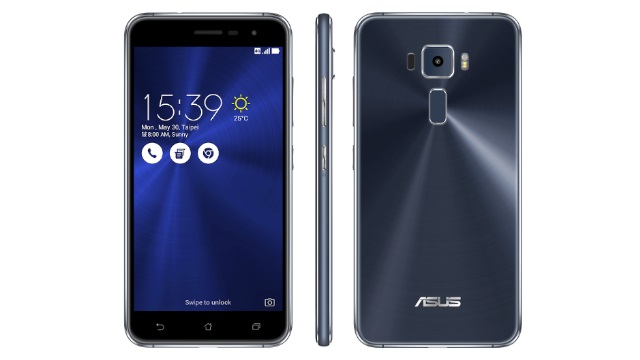
The smartphone is made of high quality metal and glass. The glossy body is non-slip, but prone to fingerprints. The layout of the controls is standard. Good display with calm and natural color reproduction. Colors look natural without oversaturation in shades. The image is well read in the sun, thanks to the automatic brightness control.
In everyday tasks ASUS ZenFone 3 ZE520KL 32Gb is fast. Most games run on medium to high graphics. The speaker is of good quality. The camera application has a large number of settings that will allow you to choose the optimal mode for shooting and ensure the quality of images at a decent level.
Pros:
- Stylish design.
- Confident signal reception.
- High quality camera.
- Sensor responsiveness.
Minuses:
- No fast charging.
- Hybrid SIM card tray.
1 Meizu Pro 6 64Gb
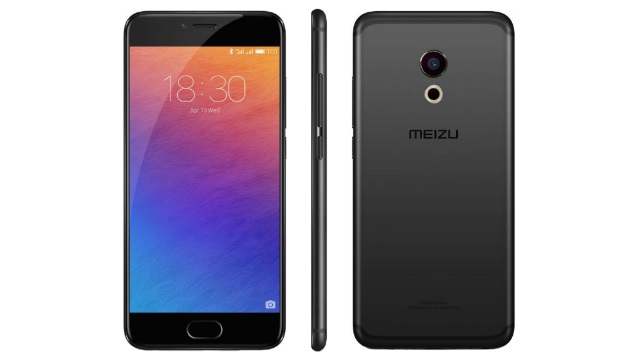
A top smartphone for those who value convenience and style. Meizu Pro 6 64Gb is completely made of metal. Slim bezels around the screen make it look sleeker and more airy. The fingerprint sensor is built into the home button. In the settings, you can adjust the screen temperature, which is important for those who use it before bedtime. Thanks to the 3D Press function, the screen distinguishes between touch and press.
The 10-core processor allows you to run any video games on it. The ideal working speed ensures that there are no glitches and freezes. The camera captures excellent image quality with great detail, even at night.
Pros:
- Stylish appearance.
- Fast charging.
- 3D Press functions.
- High performance.
Minuses:
- No stock widgets.
- Headphones sound poor.
One friend asks another:
- Why is that person talking on a cell phone,
constantly squatting and getting up again?
- He catches a wave or is afraid of snipers.
Anecdote on the topic of the day (c)
Introduction
Everyone wants to be cellular telephone was really mobile. It's nice if your device adequately receives a signal anywhere and you can speak without digital choking and interruptions. After all, mobile communications should provide that kind of freedom. Most civilized countries have 100% coverage. This means that you can receive and make calls anywhere in the country. This is a kind of supremum of communication. For Russia, such an opportunity is not yet visible, even on the horizon. We have so much land, and so few people, that it turns out to be economically inexpedient to cover every bush with a connection. So the operators have to think about where and how to install the next base station. Of course, the likelihood that the equipment will appear in the taiga is much less than near a major road or railroad. As a result, not the last argument when buying a cell phone is the sensitivity and power of its receiving and transmitting circuits. I remember the dawn of the development of cellular communications, when high-quality handsets really gave mobility to their users, and the owners of simplified solutions experienced problems. Nowadays, major cities are covered very well, but all the same, moments come to mind when your interlocutor asks you to come to the window or find a place where communication is better. One thing pleases me - every year the number of base stations is constantly growing and the coverage area is increasing. This process is irreversible. Some time ago I visited a remote area of the Tver region. There we were faced with a situation where the "fancy" cell phones refused to work. The network appeared and disappeared. Among us was the lucky owner of the rarity Siemens S35. He spoke from anywhere. This clearly testified in favor of the fact that all tubes are different and previously knew how to make real combat mobile phones. All handsets use a different hardware base and, accordingly, the quality of communication in extreme conditions (low signal level) is different. Time has passed, and that incident from memory does not allow you to sleep peacefully. I made a vow to buy the next cell phone only on condition that it will guarantee me a high-quality reception. Time has passed, and a new mobile phone has not been bought. Today's material should bring us closer to understanding the problem of "sensitivity" of a cell phone. Reading it does not guarantee you an uninterrupted connection, but it will sort through all the technical aspects that are directly related to the receiver and transmitter of your handset. You will also learn how not to get hooked by crooks.A bit of theory
So, in order to move on to a substantive conversation on today's topic, you need to deal with constants. To begin with, everything written below is applicable for GSM communications. Since the majority of Russian users choose this particular standard, we take responsibility for writing specifically for them. However, with the proper intelligence and remarkable ingenuity, you can draw analogies for all other species mobile communications... Somewhere, what we have said will work practically without metamorphosis, and sometimes we will have to leave the well-trodden path of a well-known solution. Eventually, the legs grow from one place. In this case, from a mobile phone. Now you can safely move on to the basic theoretical calculations. Any mobile phone contains a transmitter and a receiver. Therefore, pure talk about the sensitivity of a cell phone is in a sense not correct. It is necessary to separate the transmitter power, antenna implementation and receiver sensitivity. Of course, different manufacturers use not exactly identical parts or hardware. Therefore, the tubes work differently. In addition, some design features mobile phone - the geometry of the antenna and body, your position in space and external factors affect the quality of communication. However, in this chaos, there are several basic assumptions that we can rely on. Of course, these are standards for cellular communications. They were spelled out and signed many years ago. Each developer undertakes to fulfill and sacredly honor them, just as the president of the country promises not to violate the constitution. In either case, some violations are possible, but no one gets pleasure from the violation. Sanctions are possible. In this case, presidents are much better protected. For example, a cunning Asian or European company decides to create a mobile phone with a super powerful antenna. It would seem that there will be buyers, and advertising slogans - "Our antennas broadcast in such a way that they can hear you in the nearest constellation" can break the psyche of competitors. But you can't legally sell such pipes. All kinds of standards committees will wrap up the whole business. Such is the situation.A cell phone is almost a living creature. He is always trying to communicate with base station ... This happens regardless of the owner's wishes. Of course, if the handset is on. The base station transmits the signal for the handset at frequencies 935.2 - 959.8 MHz (important! This is GSM900), and the mobile phone broadcasts at frequencies 890.2 - 914.8 MHz. Harsh mathematical calculations suggest that the maximum possible distance between a cell phone and a base station can be 35 km. This is due to the operation of TDMA technology - each mobile station is allocated a time slot of 0.577 milliseconds (more precisely, the ratio is 15/26), during which time the mobile station must have time to respond to the cell. The speed of propagation of radio waves is finite and well-known - 300 thousand km / s, the maximum distance is calculated as a simple multiplication of time by speed. This is how these same 35 km are obtained. However, if the theoretical calculated value looks very nice, then in reality everything is a little different. For GSM-900 there are 5 power classes of cellular devices: 1st - 20 W, 2nd - 8 W, 3rd - 5 W, 4th - 2 W and 5 - 0.8 W. In reality, we have not seen a single wearable tube with a power of more than 2 watts. It is impossible to penetrate a distance of 35 km with such characteristics. If it is quite simple to increase the power of the base station - you need to install a more powerful transformer and agree with the supervisory authorities, then it is not possible to give each user a generator or an acidic fifty-kilogram battery behind his back. Literally everything plays against the subscriber of the cellular network: weather, terrain, infrastructure and much more. So the real distance at which communication is possible in each particular case is achieved by a simple experiment with a cell phone. In other words, you are given the most realistic reason to reliably measure the "sensitivity" of your cellular device in the field. Remember that the value you measure will be firmly tied to a specific cell phone and changing weather conditions. You will most likely not be allowed to take a couple of pipes for a test at a cell phone store. Therefore, only one action makes sense - be observant. Let's say you find yourself in a zone of not entirely confident reception. Ask your comrades how things are going with their cell phone calls. This experience is not the ultimate guarantee of purchasing success. We wrote earlier that even in one delivery, pipes of the same brand can work in different ways. Even soldering by a robot cannot guarantee an absolutely identical connection of conductors, let alone semiconductors and uniformity of antennas.
I see, but I can't hear at all!
Probably you have sometimes seen such a picture on your cell phone that the logo of your network is present on the screen, and it is practically impossible to make calls. The situation is your companion in poor signal conditions. Some inertness of the logo can kill everything human in subscribers. Sometimes the picture is aggravated by the fact that your mobile phone fell out of the network, and the friend's handset continues to draw a picture that says that there is a connection on his handset. Let's deal with this interesting fact... It turns out that not everything is so complicated and easy to explain. So, let's turn again to the work of the cellular network. It is known that for automatic control and the inclusion of the handset in the general organization, information about the signal strengths of the base stations is needed. Each telephone measures the signal strength from the base station with a specified period of time. This is done regardless of whether you are on the phone or on call waiting. Why is this done? Often the handset "sees" several base stations (BS) at once. The organization of the network is built in such a way that at one point in time it can communicate (your conversations pass) only through one BS. The mobile phone measures the signal strength from different base stations and chooses the one that "is seen much clearer." This is logical and is the basic vector of the network. The cell phone measures the input signal level at the frequencies indicated by the system. Not necessarily the nearest cell will be yours. Sometimes you connect to a geographically more distant station, the main thing with a higher signal. Is it possible to switch the machine to another base station? It is not possible to do this in the normal operating mode of a cell phone. If you change the firmware and allow the user to access the hardware settings, then this is possible.Move on. The handset measures the strength of the input signal. Of course, this cannot be done without error. The GSM standards stipulate a permissible measurement error of 6.3 times (+/- 4 dB) during normal operation. For "harsh" operating conditions, be it, for example, a very low temperature, the standard allows to make an error of 15.8 times (+/- 6 dB). All of these errors actually work for completely serviceable tubes. It would be very difficult to live without them, since the manufacturers of mobile phones are physically unable to provide a reference measurement of the incoming power. After we learned about the power measurement error, it remains to go to a specific example... Let's say that you and your handset are in a place where the actual signal level of the base station is -103 dB. Settings common work the networks are set up in such a way that they tell the handset that access to it is allowed when the measured signal level is -105 dB. Of course, this is where all our errors come out. The mobile phone receiver is made in such a way that the signal level is lowered by 4 dB. The signal measured by the tube is -107 dB. So, a fully working and meeting all standards tube will be dropped from the network, since it has no right to be included in the system. Another cell phone has an implementation such that it will overestimate the measured signal by 4 dB. He will be able to register on the network and show its logo on the screen. Let's say more that if the actual signal level for such a tube is -108 dB (in the place where it is located), then the device will still be correctly registered in the operator's network. So much for the "sensitivity" of cellular devices. So the presence of the logo on the screen of your phone indicates the registration of the handset in the network, but does not guarantee normal communication. However, it's still nice. Attempting to talk can sometimes be counted as the call itself. So, dear readers, I wish you a handset with such a receiver and a measuring path that will constantly overestimate the signal power level from the base station. Thus, we have completely destroyed the myth that users of different cell phones can measure the signal levels displayed on the screens of their mobile phones. Indeed, such conversations are conducted only out of profound ignorance in the matter. Henceforth, when they ask you about the signal level and appeal to the information on the screen of the handset, you should not waste time on empty conversations. It makes no sense to compare the measured power of the incoming signal, but you should completely forget about the "reference cubes". How this phone manufacturer recounts the data in them remains a mystery. It makes no sense to waste your time on its disclosure.
Dance with a honeycomb
Any duplex radio station, and a cell phone is a special case of this rule, uses an antenna to receive and transmit a signal. This fact is another argument for the ephemeral nature of the concept of "sensitivity". Separate use of the same tube element entails some compromise. The transmitter should not emit phonics on the receiver, and the latter, in turn, must not interfere with the former. We all live on planet Earth and fully comply with the physical rules that nature imposes on us. Therefore, it is foolish to believe that one electrical device able not to interfere with the work of another. As a result, developers come to an elementary compromise. It is he who allows the device to function so that you, the subscribers, can hear the voice of your interlocutor in the receiver. By the way, His Majesty The compromise is often made in favor of the receiver. Of course, it would be possible to create not duplex, but simplex transmission - at one point in time only in one direction, but such a connection would not satisfy modern user needs. There is an opinion that if you cover the antenna of a cell phone with your hand, then conversations will become clear and silent. Let's take a look at this situation. Indeed, if you cover the antenna with any object, then in the overwhelming majority of cases the level of the measured signal by the cellular the phone will fall... The mobile device is designed in such a way that the worse it “hears” the cell, the “louder” it answers it. Accordingly, the output signal power will increase. Its ability to pierce your hand or other object that obstructs the antenna is not limitless. In addition, the base station will not increase the power, since it does not know that the user is interfering with its signal and its parameters are simply not designed for this. Accordingly, all your actions are more destructive when you cover the cell phone antenna with your hand. By the way, the level of the measured input signal is influenced not only by the hand, but also by the metal jewelry on it. When talking on a mobile phone, try to keep your hand as far away from the antenna as possible. So you will save your health and do not create unnecessary obstacles. Reinforced concrete structures are becoming an excellent hindrance to cellular communication. Remember, the shorter the wave, the better it will penetrate them. By the way, this is due to (and not only this) the fact that operators in the city center like to use the 1800 MHz band. Outside the city, in conditions of poor communication, try to climb all kinds of hills. This action removes unnecessary physical interference in the path of electromagnetic waves from the cell phone to the base station. Remember that in the frequency ranges used in cellular communications, even with a small, only a few centimeters, or tens of centimeters, movement of the antenna, or over time, the signal level can change 100 or even 1000 times (by 20 - 30 dB) ... Be sure to move and look for "good" places. Now is the time to talk about the darkest topic of mobile communications - external and internal antennas. It is difficult to count all the stories and controversies on this topic. We will only talk about standard antennas. Or those that are already installed in your mobile phones. Of course, additional (remote) antennas with boosters, which you can purchase for some money, significantly improve reception and transmission, but you have to forget about mobility. By the way, such solutions are very popular with motorists, since they do not have to carry them. So, internal or external antenna? There is no unambiguous solution to this problem. If you know how to solve wave equations and put down boundary conditions, then, having received the true parameters of your mobile phone, you can simulate a call situation on a computer at various points of the coverage area. A few years ago, an American posted the results of his calculations online. They sparked a lot of controversy. As a result, he removed them. This is a pity, since this is the only example of such calculations. Experience shows that modern built-in antennas are in no way inferior to external solutions. Life is significantly complicated by all kinds of home-grown decorations that users broadcast to the antenna. As a result, the antenna can operate in an abnormal mode and, perhaps, even harm your health, radiating mainly towards your head.Extended cell
However, the operator can not always install ordinary base stations to cover large areas. Imagine, for example, a desert or water area. Economically, and sometimes purely physically, it is simply impossible to place the required number of base stations. For the GSM standard, a cell configuration is provided, in which the communication range is increased to 70 km. It's called Extended cell. With this use of equipment, the number of conversational channels is reduced to 3. But the operator covers huge areas with only one station.Not so long ago, near St. Petersburg on the Gulf of Finland, one of the operators used Extended Cell. Subscribers could see the name of this operator with an exclamation mark on the screen of their mobile phones. This meant that the handset saw the network, but could not communicate with it. The problem was solved by using external directional antennas when the output of the device was amplified. Thus, Extended Cell allows you to cover gigantic sparsely populated areas. However, their use is becoming less and less popular. In Siberia, such cells cannot be installed anyway, and resort areas in terms of their cellular load have long surpassed the centers of megacities in terms of the intensity of telephone conversations. Extended Cell physically cannot serve such places, and the requirement for an additional antenna does not make this communication method popular enough.
Attention, crooks
Each user would like to increase the "sensitivity" of their cellular device. Attackers are ready to use this in their plans to fool subscribers mobile networks... It is easiest to deceive a person by providing him with a service that is difficult to verify. And if its cost turns out to be small, then this is just a treasure for a swindler. As a result, “sensitivity enhancement stickers for mobile phones” have appeared on the market. Of course, they fit all types of pipes, sell them over the Internet and cost ridiculous money. The manufacturer of this product claims that the sticker works exclusively with the laws of physics and gives your phone an unprecedented sensitivity. One gets the impression that stickers charmed by sorcerers and fooled by a tambourine would have sold quite well too, but the scammers decided to play on the dullness of the crowd and the massiveness of the market. Miraculous stickers are sold on the Internet with great success to this day.The creators of the sticker recommend sticking it under the battery. A logical move. There, the sticker will not interfere and will not interfere with the operation of a real antenna. Incidentally, the latter consumes enormous forces. Each antenna is unique in its own way and there cannot be a common panacea for all this diversity. Fraudsters can only upset the operation of your regular antenna. Possibly introduce interference and noise. It is also doubtful the advertising statement that one sticker replaces a meter long antenna. There simply cannot be a need for such a length. Of course, you can assemble a meter antenna, but it will be a very complex and not very necessary system. In a word, they make a fool of our brother. By the way, the legs of this sticker come from Asia. There really was at one time selling cell phones and special antennas in the form of stickers to them. However, the system was abandoned, since users simply could not stick them correctly. It was important to accurately position the sticker on the right part of the mobile phone. The task turned out to be overwhelming. So don't waste your money and encourage scammers.
Final word
Today we have dealt with the concept of "sensitivity" of a cell phone. There is only one conclusion. The better your tube is assembled and the better the element base, the easier it will be for you to speak in areas of weak reception. If you have the opportunity to use remote antennas with a narrow radiation pattern, then give them a try. They really help to sometimes solve difficult communication situations. Let's hope that after a while cellular operators will cover the entire globe and we will forget about this problem. Stay in touch!You may be living in an area that has poor cellular signal strength and therefore want to make sure you get the phone that best supports signal reception.
Such fears are well-grounded, since many users purchase phones, enter into extremely expensive contracts with mobile operators, and only later it turns out that their operator does not have a coverage area in the place of residence. V this material we will tell you what to do in such a situation.
How important is the presence of an antenna on the phone to ensure the best reception?
High-quality signal reception on a mobile device can depend on many factors. The most important is the size of the antenna that is installed on the phone. Less modern phones operating in the GSM standard are equipped with a long antenna, which are installed at the end. This classic ...
0 1
I will raise this topic here, suddenly someone will help.
Thanks in advance to everyone who responded.
It is assumed that we will live in the future in a zone of reliable GSM signal reception in all inhabited places on the planet, and on this assumption, all mobile phone manufacturers began to save on gsm radio modules. Alas, in our version of the future there are still such places as: basements, elevator shafts, subways, secret bunkers, upper floors of high-rise buildings and dense park areas - in which many phones completely lose their network. Of course, you can always find old retro bricks from Alcatel, Nokia, Sagem (oh, my God, they don't have a camera! Even java and gprs are not present! The calls are screeching!), Which catch the signal even under water, but walking around the city with them is completely indecent ...
A search is announced for a phone with the most sensitive radio module in two nominations (the price does not matter):
1) Regular phone(relatively decent look, any form factor, gprs, java, mp3)
2) Smartphone ...
0 0
By the way, about the quality of the reception. The "non-shorted" Motorola (without GSM-1900 support) has such an option as manual band switching - you can choose 900, 1800 or 900/1800 (ie, automatic).
So, already several times I got into such situations with nationals: while the phone is on the "machine" - 1-2 sticks are displayed, and at the same time it is either impossible to call at all (it breaks), or when you call you hear such troubles that hmm ... Well, now we switch the phone to the operating mode in the 900 MHz range ... you guessed it: 4-5 sticks on the indicator, excellent quality of dialing and voice transmission :)
ZY Personally, I think that you can trust three manufacturers - Nokia, Motorola & SonyEricsson, the rest can quite realistically slip ... (there were precedents), but these are somehow calmer.
__________________
the terrorist movement "KAMAZ" announced the termination of the production of a car for suicide bombers ...
0 0
The quality of mobile communication depends on the operator there are two types of operators, the first type works in the 1800 MHz range, the second type of operators operates in the 900 MHz range, and at 900 MHz with the same transmitter power, the communication range is seven times higher than in the 1800 MHz range. that the lower the frequency, the longer the wave, respectively, the longer the wave, the less it is absorbed by various obstacles, trees, buildings, etc., that is, the longer waves better bend around the obstacle, the shorter and the quality of the connection is 900 MHz.
Bilain - 900 MHz
Megaphone - in the city 1800 MHz outside the city 900 MHz
MTS - 900 MHz
Tele2 - 1800 MHz
Fly - 1800 ...
0 0
Very often, many people ask the question: how to choose the most sensitive model of a mobile phone, they regularly ask this question in mobile phone salons in various forms, discuss it on Internet forums. By the way, in the discussions of subscribers of cellular networks, he also occupies far from the last place. Often disputants, stubbornly prove the superiority of their favorite models, as a result of which they are divided into several irreconcilable, almost warring camps. Usually they all rely on their own experience and the results of their experiments. The usual desire of a person buying a mobile phone is to choose a device that will provide reliable communication both in a country dacha and in an office - it is understandable and natural. And not only with the help unlimited tariff... The most annoying thing is to find out that your new, “cool” phone for several hundred dollars with a beautiful number cannot catch the network where almost all the cheapest models do. Many publications dedicated to cellular ...
0 0
Quote: Originally written by Raven75:
It's not even about survival. In the usual comfort Or rather, in the absence thereof. But, who knows, suddenly having a phone will become a matter of survival in a critical situation. A fire there, a flood, an ambulance needs to be called, but you never know ...
The fact is that at the dacha we have a very bad connection. And hell knows why. But it is so. Residents of the dacha village have long been tormented and swearing. "Megafon" does not take at all. "Beeline" takes very badly. Somehow he catches "MTS". But it's also hard, on some days the signal disappears and you have to leave the house to catch it. Well, in the receiver often croaks or echoes are such that you can't make out anything.
However, I noticed the following thing. All phones are taken there in different ways. When I have 1 antenna strip on my smartphone, my wife has 2 on her phone. And when I have no signal at all, she has 1. And they call her more often. And she sends SMS without problems, but they often "hang" with me. In a word, it's also about the phone itself, about the power ...
0 0
On w3bsit3-dns.com, the collective mind suggested that Motors remain leaders in terms of reception quality. Some Samsung, Lenovo and Huawei were also mentioned. The last two are somehow scary to take. Samsung Galaxy S3 seemed too healthy. From the remaining motors, I removed the old ones from Android 2.x.x, which were not on sale and were too expensive (budget up to 15,000). After all the filters, there was only Motorola RAZR i for 13,200 left. It was scary to take. The previous phone from Motorola Defy +, as has been said more than once, pleased only with the quality of reception. Everything else was terrible. But there’s nowhere to go - there was no alternative for my requirements. It turned out that he was afraid in vain. Apparently, Google got its brains right after buying the company, and they began to make adequate devices under the Motorola brand.
Pros of the phone:
-Excellent welcome. Feels like it catches as well as Defi.
-Long battery life. Half an hour ago, it was completely discharged, having endured 58 hours, of which at least 13 hours were in the zone of poor reception. Everything...
0 0
View full version: What phones are good at picking up the network? (still better than others)
Interesting models of mobile phones (GSM), which are distinguished by good reception indicators in extreme conditions (in hikes, at a distance from repeater towers, in mountainous areas, etc.)
It is clear that there are no super phones (and please do not write that no cell phone will catch in a cave at a depth of a kilometer from the earth's surface and in the sea hundreds of kilometers from the coast), but still there are devices that catch a little better ( for example, there are such situations, far from the city, people have to try to walk around the bush in order to catch the network ... and some people can call without too much strain without going anywhere ...)
What kind of phone models do you remember with a special receiving power? :))
Well, for example, Nokia 3310 ... Actually, the best reception is with devices with monochrome display.
I usually use the 6310i ... it also has a monochrome screen :))
Actually the best reception ...
0 0
Friends! I have lg optimus g and some of its features disappoint me: poorly catching the network, i.e. in places with an uncertain reception, the whistle begins when the network simply falls off, then it shows that the network seems to be there and the reception is about half, but they cannot get through to me, etc. Therefore, the question arose about choosing a smart with good network reception. But now everyone is somehow hammering a bolt into this important function of the phone and does not mention it in the reviews.
Prompt pliz smart close to such requirements:
1) good reception of 2g / 3g network !!! well, GPS also does not hurt;
2) a battery with an average autonomy time (the more the better, or with a removable battery);
3) a screen from 4 inches (4.5 is better, and that vision is not ice);
4) The axis is an android or whatever :) (the iPhone catches the network also not very much like my optimus (my friend has 5 and the same difficulties, but suddenly we are mistaken.));
5) the smart will be used in tandem with the iPad (special compatibility is needed only for cloud services - Yandex, Google, ...
0 0
Among the characteristics modern phones often one is lost important parameter- connection quality. The Danish Energy Agency and officials from the Nordic telecommunications administrations conducted a test to find out this characteristic. 26 popular devices in the region took part in the study.
The quality of the connection was checked at a time when the gadgets were in the hands of a person and lay on the table. Here, quality refers to the loss of signal by the antenna. mobile device for voice communication and data transmission.
Apple smartphones do poorly in the hands of the user. Experts are inclined to believe that the metal case is to blame - other metal accessories are also of poor quality. And the Lumia 650, Sony Xperia The Z5 Compact and the latest flagships from Samsung have performed well.
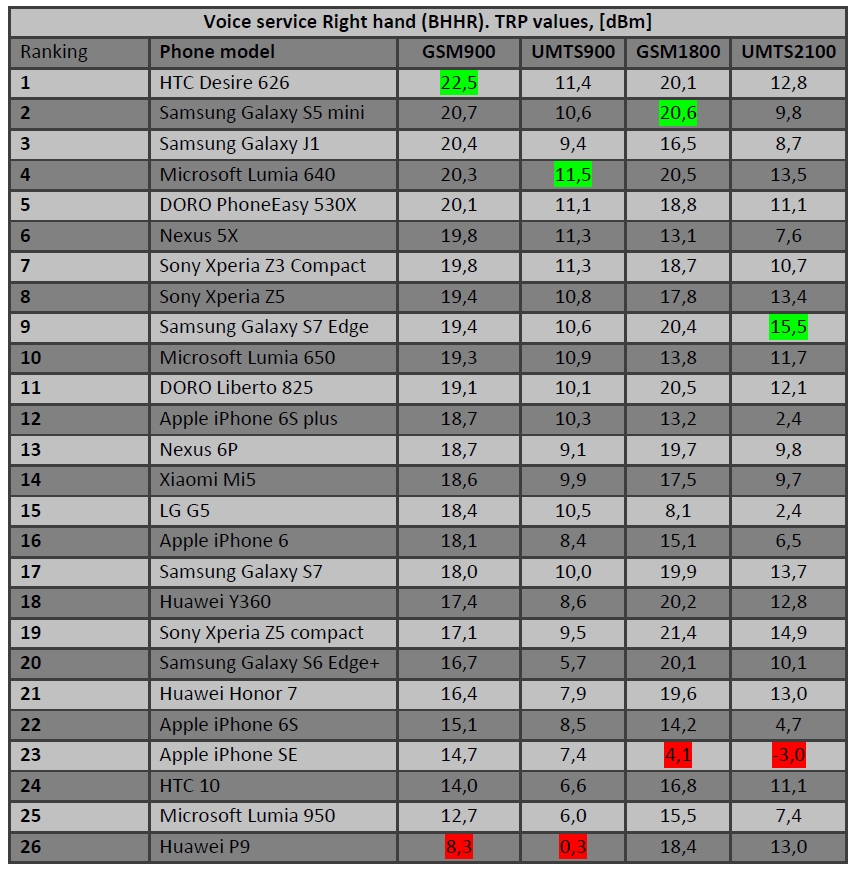 Loss of signal by telephones when held near the head in the right hand. The table is sorted by performance in GSM900 mode as popular for voice calls in the region
Loss of signal by telephones when held near the head in the right hand. The table is sorted by performance in GSM900 mode as popular for voice calls in the region
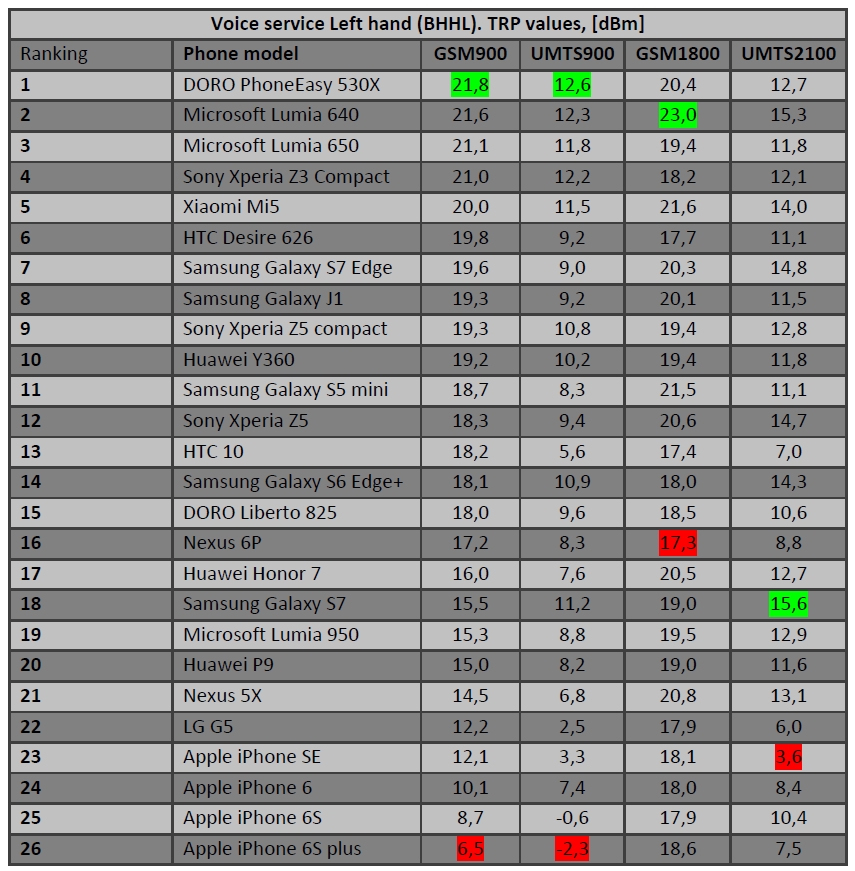 Loss of signal by telephones when held near the head in the left hand. The table is sorted by performance in GSM900 mode as popular for voice calls in the region
Loss of signal by telephones when held near the head in the left hand. The table is sorted by performance in GSM900 mode as popular for voice calls in the region
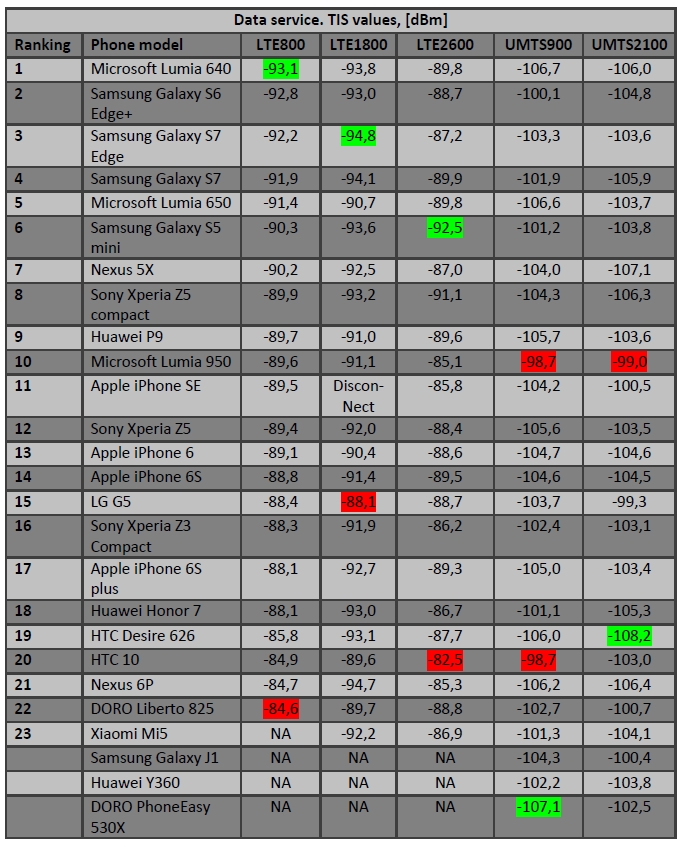 The signal quality of the data transmission of phones when held in the right hand. The table is sorted by the popular 4G LTE800 standard in the region. In Ukraine, only UMTS2100 is relevant
The signal quality of the data transmission of phones when held in the right hand. The table is sorted by the popular 4G LTE800 standard in the region. In Ukraine, only UMTS2100 is relevant
One of the study's authors, Professor Gert Pedersen of Aalaborg University, says that some phones require normal work hundreds of times more powerful signal. The expert believes that on phones it is worth noting the efficiency of the antenna, as today the energy efficiency of household appliances is marked.
The researchers also tested the performance of several popular tablets in the region: Nexus 9, iPad Mini 4, iPad Air 2, Microsoft Surface Pro 4, Samsung Galaxy Tab S2 9.7, Sony Xperia Z4 Tablet. They were tested when working on a stand and when holding the device with both hands.
![]()
The test setup holds the tablet with both hands
But only four of them have a built-in GSM modem (Sony Experia Z4 tablet, Apple iPad Air 2, Samsung Galaxy Tab S2, Apple iPad mini 4), and only they were tested.
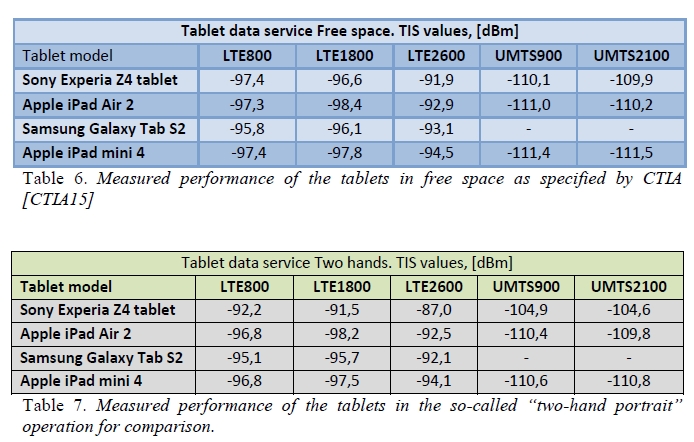 Above - the quality of the signal when transferring data for tablets lying on the stand. Bottom table - signal quality when holding with two hands
Above - the quality of the signal when transferring data for tablets lying on the stand. Bottom table - signal quality when holding with two hands
In addition to ensuring a reliable connection to the base station, smartphone manufacturers must monitor the radiation power. Although the harmful effects of radio waves from mobile phones on human health have not been proven, in its Samsung time when it turned out that one of the models had a SAR of 2.7-2.9 W / kg, she voluntarily withdrew 140,000 devices from sale. One thing is clear: the lower this level, the safer the use of the device.




